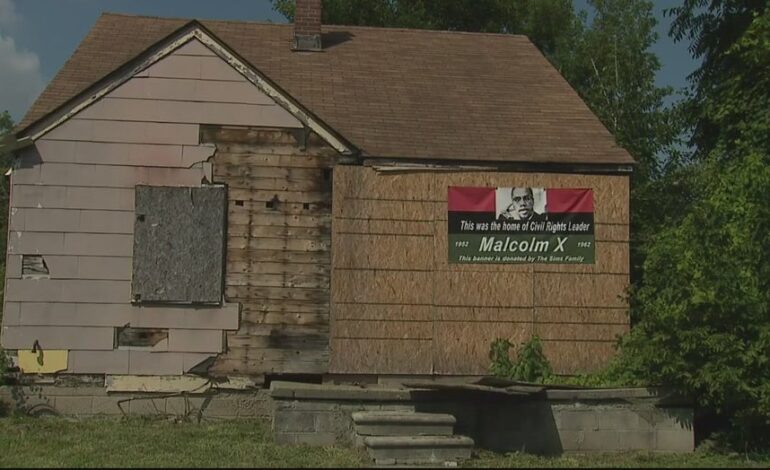INKSTER — The former home of activist Malcolm X in Inkster has been added to the National Register of Historic Places.
The National Register of Historic Places is the U.S. federal government’s official list of districts, sites, buildings, structures and objects deemed worthy of preservation for their historic significance.
The civil rights leader was born in 1925 in Omaha, Nebraska as Malcolm Little and relocated several times throughout his childhood. He lived in the home on Williams Street near Annapolis Avenue in Inkster with his brother, Wilfred, after he was released from prison in 1952, shortly after he joined the Nation of Islam.
“A key aspect of the National Register program is to document and honor places that are associated with events that have made a significant contribution to the broad patterns of our history,” Mark Rodman, Michigan’s state historic preservation officer, said. “People and places in Michigan played important roles in the civil rights movement of the mid-20th century. We are honored to join the city of Inkster in celebrating one of those roles with the listing of this home.”
The home in Inkster is one of few places where Malcolm X resided that remain standing.

Malcolm X
Malcolm X’s time at this home coincided with the beginning of active surveillance by the FBI, which continued for the remainder of his life as he played a key role in the civil rights and racial justice movements in the 1950s and 1960s before he was assassinated in New York City in 1965.
The home in Inkster has been vacant for several years, but the form and structure of the home are largely intact as it was in the early 1950s when Malcolm X resided there, including his second floor bedroom and the area where the family ritually prayed together.
“With so much of the physical legacy of Malcolm X lost over time, this house is all the more important,” said Michigan State Historic Preservation Office National Register Coordinator Todd Walsh. “Its significance is not simply its association with Malcolm X, but its connection to Malcolm at an incredibly pivotal time in his life. This house will help us better understand Malcolm X, not as an icon, but as a human being. It will also help us understand his family and the important role that played in his development into one of the most important figures in American history.”
Project We Hope, Dream & Believe is helping lead the initiative in transforming the home at 4336 Williams Street into a museum that will focus on the life and significance of Malcolm X, advocacy and as a youth learning center that’s being aided by a $380,000 grant from the National Park Service African American civil rights program.
“We are working hard toward rehabilitating and renovating the Malcolm X house, with the goal of transforming the home into a museum that will showcase Malcolm’s life history, with special focus on his human and civil rights activism, as well as his relationship to the city of Inkster, which he referenced in one of his final speeches,” Aaron Sims, executive director of Project We Hope, Dream & Believe, said.
The group is also working with Wayne State University’s Anthropology Department to conduct archaeological excavations around the home in the hopes that it will reveal more clues about Malcolm X’s time there.
To be considered for the National Register, a property must be at least 50-years-old and significant when evaluated in relation to major historical events or trends. Nearly 2,000 properties in Michigan have been listed in the National Register since the program launched in the 1960s.






Leave a Reply